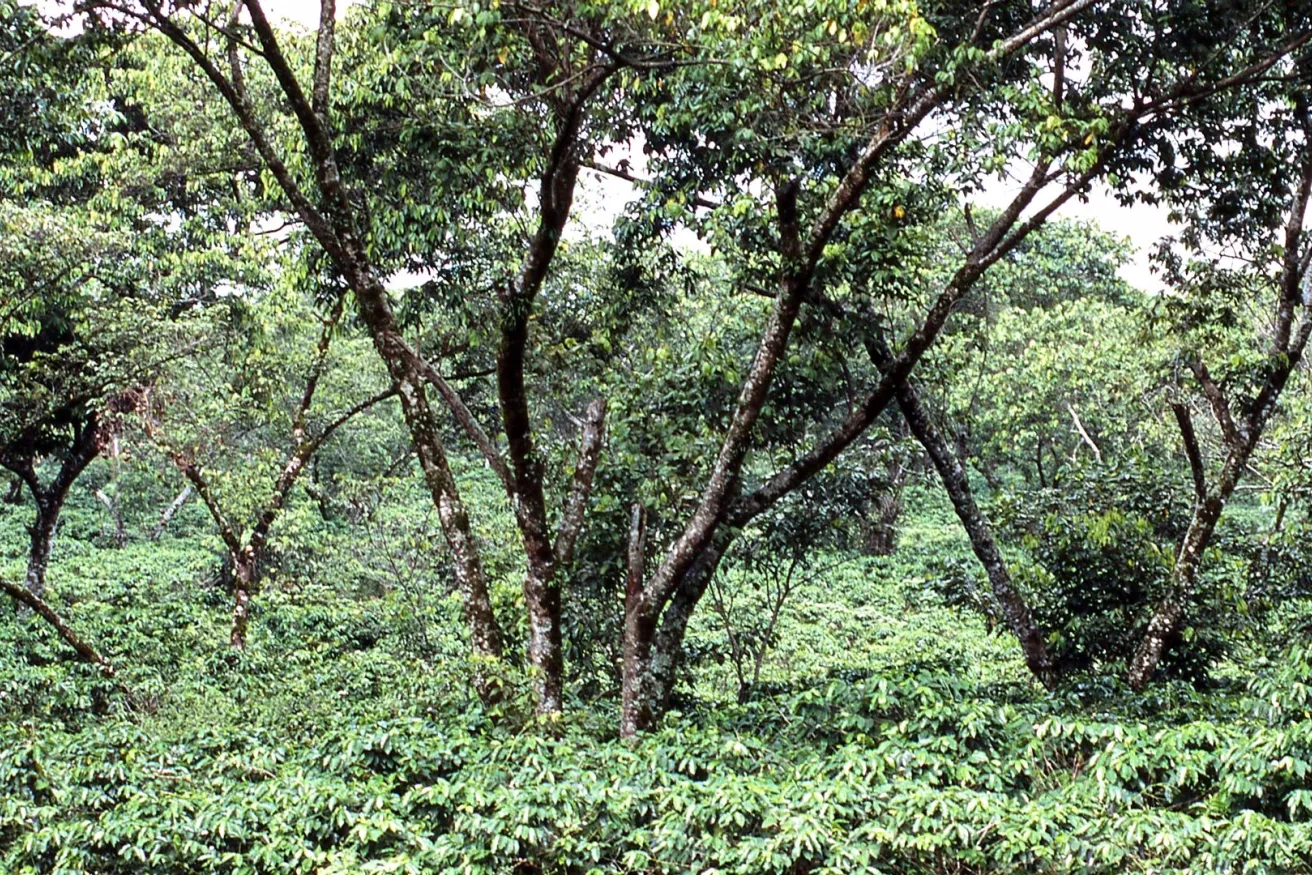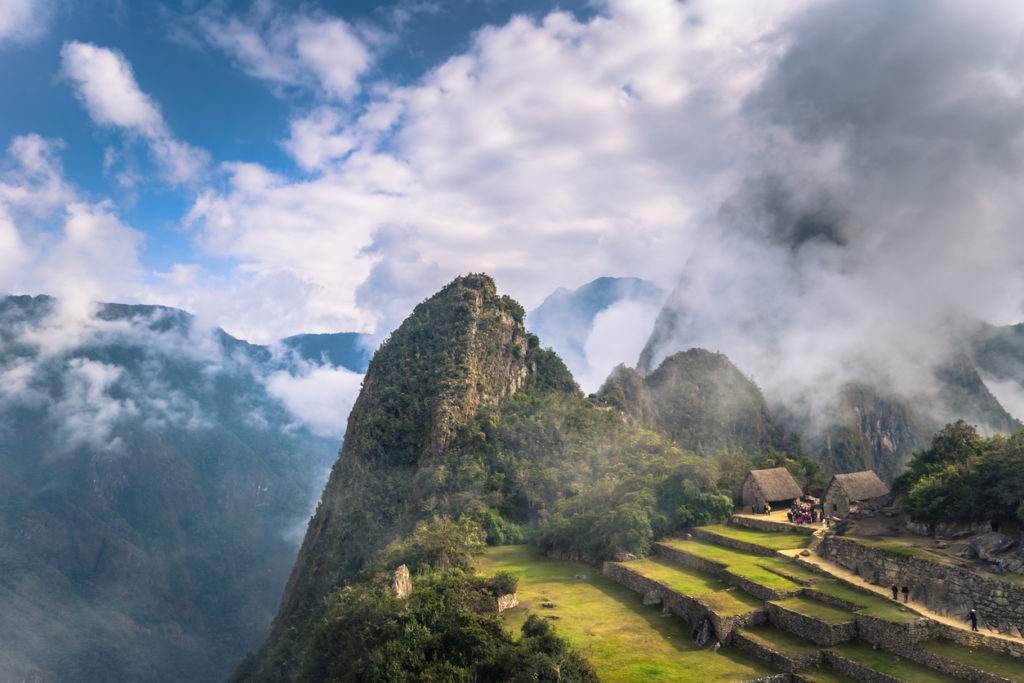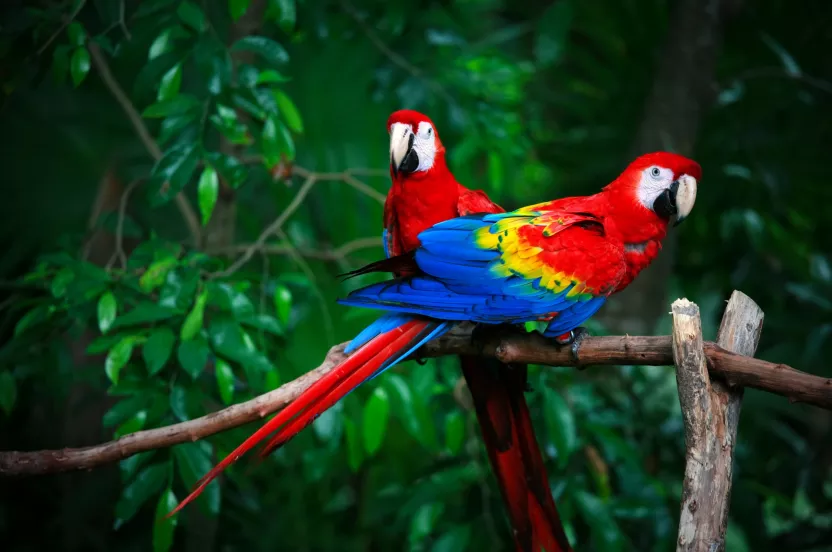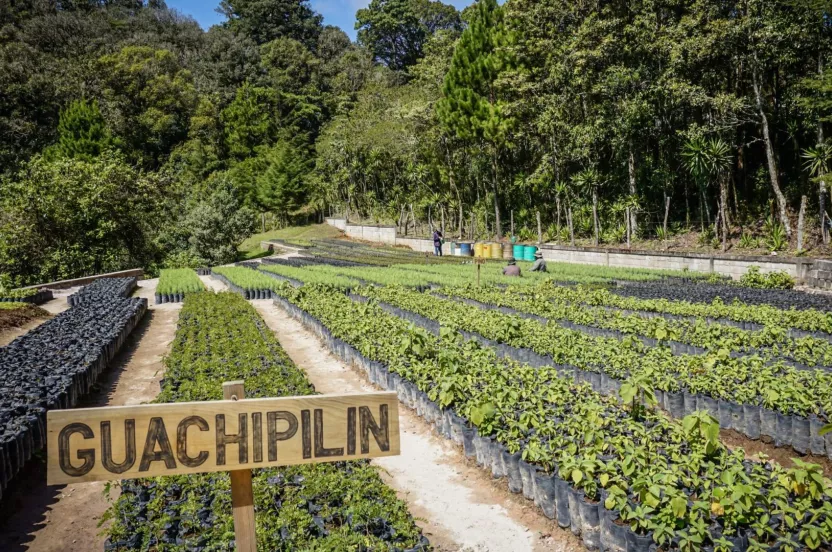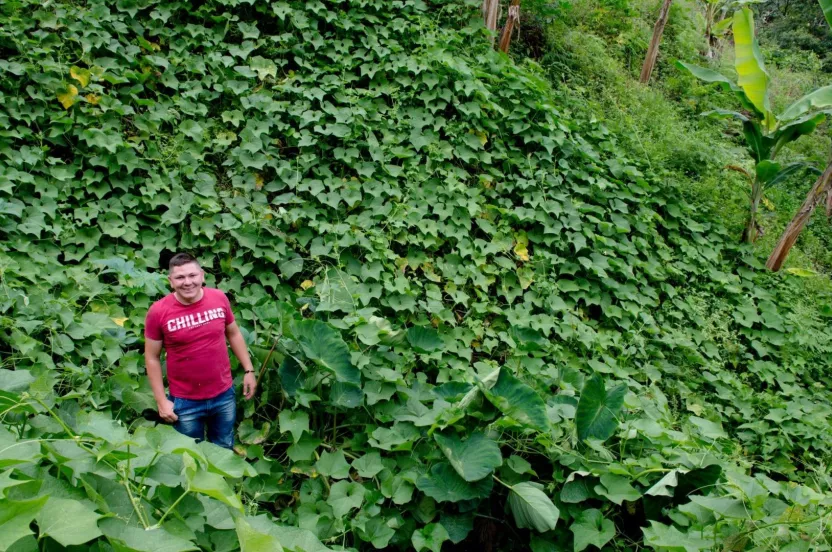The Arbor Day Foundation is pledging 10 million trees to areas impacted by hurricanes Helene, Milton Help us replant
Arbor Day Coffee is grown by farmers who are committed to using sustainable agroforestry management practices on their farm. Agroforestry is a land use management system where trees or shrubs are grown around crops or pastureland. We call it the shade-grown difference.
This shade-grown practice of harvesting coffee leads to healthier crops and has a positive environmental impact. In some cases, it can also be more cost effective than farms with sophisticated technology and chemical treatments.
Agroforestry has its advantages. For example, planting a diverse selection of tree species — like fruit trees — empowers smallholder coffee farmers to grow nutritional food sources, making them less dependent on a single crop.
Additionally, there are numerous environmental benefits. Trees add nutrients to the soil, provide shade to crops, and add an aesthetic value to the property. They work as a windbreak to protect crops from high-winds, sequester carbon, clean water, and help regulate temperature and humidity. Forested landscapes also become corridors for wildlife.
The shade-grown difference leaves a lasting impact that helps preserve precious rain forests and surrounding communities.
Where did Shade-grown Practices Originate?
Agroforestry is not a new practice. In fact, shade-growing was commonly practiced in the ancient world. For example, the Inca Empire that once inhabited Peru was known for its agroforestry, or shade-grown practices before the Spanish colonized the region in the 1530s. The Incans used to cultivate as many as 70 crop species by intercropping tree species.
But today, this ancient tradition is at risk. The challenges of rising temperatures and growing deforestation for firewood, livestock, and agricultural crops has made it harder for farmers to harvest shade-grown coffee. In order to continue this healthy, traditional method of growing coffee, farmers are forced to move to higher elevations to reach cooler temperatures and untouched forests to support coffee production.
This creates a dilemma. We are losing forests at an alarming rate. This hurts the farmers and the communities they serve. It is estimated that by the year 2050, most of the land used to grow coffee will no longer be suitable for production.
But we have a sustainable solution.
How are we Preserving Threatened Rain Forests?
We have launched a new initiative called Project 2050 with the goal of reforesting areas of high need. We’re focused on helping every player in the coffee supply chain support better practices and ease the impact of coffee production on the environment.
But we can’t do it alone.
We’re working with coffee producers to help promote sustainable agroforestry management practices and with coffee roasters, importers and cafés to offset carbon created through the coffee supply chain by reforesting areas of need.
We will continue to deliver responsibly-sourced coffee, but we are growing our network so that others can join our cause. When you drink Arbor Day Coffee, you support farmers around the world and help preserve two square feet of rain forest.
Stay up to date, subscribe to the Arbor Day coffee newsletter .

